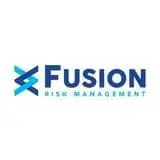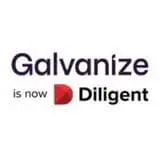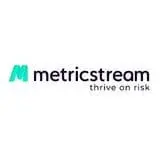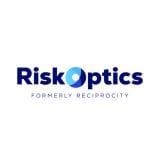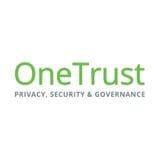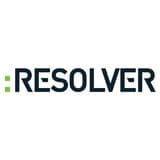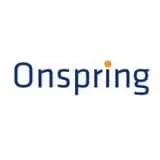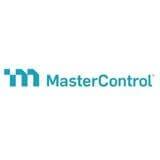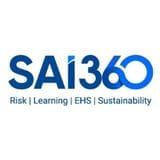- Free Version: Available for teams of up to 10
- Pricing: Premium plan $24/month (with free 30-day trial period)
- Platforms supported: Available on mobile app (iOS and Android) or a web-based software
Why Use SafetyCulture?
SafetyCulture is a digital platform that businesses can use as risk management software. As one of the most widely-used mobile risk management app, firms from every industry can rely on SafetyCulture to revamp their risk assessment program and further engage employees in conducting risk-related activities. Aside from providing a user-friendly interface, SafetyCulture offers an extensive library of learning resources that companies can utilize to help their staff use the mobile app more effectively.
Features:
- Identify, assess, analyze, and prioritize risks through clear, smart, and interactive risk inspection checklists.
- Detect critical issues and create corrective actions as crucial parts of effective risk management.
- Define key indicators, identify solutions, and visually monitor risk status via the Analytics dashboard.
- Create reports with real-time and accurate data. Share them with your team and other relevant stakeholders for time-sensitive actions and changes.
- Automate emergency alerts and notifications with Heads Up and Sensors features.
- Ensure compliance with various regulatory requirements such as environmental, Food and Drug Administration (FDA), International Organization for Standardization (ISO), and Occupational Safety and Health Administration (OSHA) compliance.
- Leverage your platform ecosystem and experience seamless integrations with your team’s existing tools.
- Build efficient workflows for comprehensive and cohesive management of risks.
- Share documents and allow your team to directly complete audits by modifying access levels accordingly.
- Save historical and current data in one centralized location. Use these data as the basis for future decisions to prevent risks from severely affecting your business.
Why Use Fusion Framework Safety System?
Fusion Framework System is a risk management platform that allows users to reduce risks and simplify their operational complexity through highly customizable and flexible tools. Fusion lets users take advantage of data-driven risk insights and enables teams to leverage in-app capabilities that suit their business and industry needs.
Features:
- Risk Mitigation and Control Management
- Risk Program Management
- Situational Monitoring and Risk Analysis
- Risk Identification
- Risk Tolerance and Appetite
- Risk Remediation, Testing, and Quality Management
- Third-Party Risk Management
- Information Technology and Security Risk
- Free Version: Not available
- Pricing: Details not available
- Platforms supported: iOS, Android, Windows, & Web
Why Use Diligent?
Diligent (formerly Galvanize) is an Enterprise Risk Management (ERM) solution that offers flexible workflows and advanced risk-managing capabilities. This platform is designed to drive efficiency across the entire process of risk management—from planning, to execution, and up to reporting. Diligent also lets users tailor their ERM to meet the organization’s unique requirements.
Features:
- Risk Identification
- Risk Evaluation
- Enterprise Risk Management
- Integrated Risk Management
- Cyber Risk and IT Risk & Compliance Management
- Audit Management
- Third-Party Risk Management
- Internal Controls Management
- Free Version: Not available
- Pricing: Available upon request
- Platforms supported: iOS, Android, Windows, & Web
Why Use MetricStream?
MetricStream is an integrated risk management solution and purpose-built platform that enables organizations to implement a systematic approach in managing operational risks. Through a data-driven solution, MetricStream allows businesses to gain a sound assessment of risks and prioritize them accordingly.
Features:
- Governance, Risk, and Compliance
- Enterprise and Operational Risk Management
- Third-Party Risk Management
- IT Vendor Risk Management
- Integrated Risk Management
- Regulatory Compliance
- Internal Audit and Financial Controls
- Environmental, Social & Governance (ESG)
- Free Version: Not available
- Pricing: Available upon request
- Platforms supported: Web
Why Use RiskOptics?
RiskOptics (formerly Reciprocity) is a platform that equips organizations to manage operational risks in a strategic manner. Through powerful risk solutions, this platform helps businesses make smarter and more informed decisions about potential risks. Reciprocity also protects your enterprise, assets, system, and data with timely actions and responses.
Features:
- Risk Assessment
- Risk Monitoring
- Operational Risk Management
- Enterprise Risk Management
- Cybersecurity Risk Management
- Compliance Management
- Customizable Risk Calculations
- Process/Workflow Automation
- Free Version: Not available
- Pricing: Dependent on the organization’s needs
- Platforms supported: Web
Why Use OneTrust?
OneTrust is a cloud-based platform that establishes and measures an organization’s compliance with regulatory requirements to decrease risk exposure and to secure data privacy. As a risk management platform, it also helps identify, mitigate, and monitor both internal and external risks to protect businesses.
Features:
- Risk Analysis
- IT & Security Risk Management
- Third-Party Risk Management
- Third-Party Risk Exchange
- Enterprise and Operational Risk Management
- Incident Management
- Risk-Based Audit Approach
- Unified Data Discovery Tool
- Free Version: Yes, free tools
- Pricing: Dependent on the organization’s needs (with 14-day free trial)
- Platforms supported: iOS, Android, Windows, & Web
Why Use Resolver?
Resolver is an easy-to-use risk management solution that enables organizations to assess risks and evaluate the impact of implemented mitigation plans. This platform also equips businesses with configurable solutions that allow them to make quick, smart, and effective decisions and integrate them into their business strategies.
Features:
- Risk Assessment
- Risk Analytics
- Data-Driven Risk Insights
- Vendor Risk Management
- IT Risk Management
- Enterprise Security Risk Management
- Compliance and Ethics Management
- Incident Management
- Free Version: Not available
- Pricing: Details not available
- Platforms supported: Web
Why Use Onspring?
Onspring is a risk management software that businesses can use to gain effective insights about potential operational risks and centralize all relevant data in one place. Through this cloud-based platform, organizations can identify, assess, and prioritize risks and align solutions with business objectives.
Features:
- Risk Assessment
- Third-Party Risk Assessment
- Automated Risk Assignment
- Interactive Risk Dashboards
- Third-Party Integrations
- Workflow Management
- Reporting/Analytics
- Free Version: Not available
- Pricing: Dependent on the organization’s needs
- Platforms supported: Web
Why Use MasterControl?
MasterControl is a tool that pairs risk management with quality management to easily mitigate process and product risks. This cloud-based compliance software also lets users conduct all risk-related activities in one centralized location for efficient risk management, and to ensure compliance with regulatory requirements.
Features:
- Risk Assessment
- Risk Mitigation
- Operational Risk Management
- Quality Risk Analysis
- Quality Risk Management
- Compliance Management
- Incident Management
- Document Management
- Free Version: Not available
- Pricing: Dependent on the organization’s needs
- Platforms supported: iOS, Android, Windows, & Web
Why Use SAI360?
SAI360 is a cloud-based software that enables businesses to easily implement the program across their team and lets users automate their risk management, compliance activities, and contingency plan for disasters. This purpose-built and innovative platform also allows organizations to configure their in-app experience by utilizing industry-based solutions and flexible modules for improved risk management.
Features:
- Risk Identification
- Risk Assessment
- Indicators Monitoring
- Risk Dashboard and Analytics
- IT Risk & Cybersecurity Management
- Compliance Management
- ESG Risk Management
- Interactive Interface and Powerful Workflows
- Free Version: Not available
- Pricing: Details not available
- Platforms supported: Web
What is Risk Management Software?
Risk management software is a tool that businesses use to identify, assess, and proactively manage operational risks. With the use of this tool, companies can recognize potential vulnerabilities, analyze them, provide safety-nets in case of crises, and identify further growth opportunities. Through a data-driven approach, risk management software helps industry leaders make decisions in real-time with high-level accuracy.
Common Features of Risk Management Software
Each business in every industry has a particular set of requirements when it comes to using third-party tools such as risk management software. Although their specifics can vary based on the primary reason of using the software and the needs of the organization, the main purpose of a risk management software is to establish the first lines of defense against potential risks and their possible impact. Here are the core features that a risk management software should have:
Risk Identification
Risk identification is one of the first steps to complete in the process of risk management. This is the ability to recognize and determine that a particular scenario, process, or system can potentially prevent a business from operating normally.
Risk Assessment
With risk assessment, businesses can evaluate the risks based on predefined factors agreed upon by individual business units. Risk assessments also let users assign simple risk ratings that measure the potential impact of risks or hazards to the business.
Risk Prioritization
After assessing the possible impacts of identified risks, the next step is risk prioritization. This is the process of determining which of the risks should be acted upon or addressed first. Using a risk register, businesses can prioritize risks based on the level of severity, frequency, and probability.
Issue Management
Aside from the main risk-related activities, softwares should also be able to ensure that all the issues found and risks identified are accounted for and acted upon. Issue management lets businesses visibly achieve that.
Monitoring and Dashboards
Risk management software should have an analytics dashboard where users can visually monitor and consistently see the progress of the listed risks. With the help of this feature, businesses can easily observe whether the implemented measures are effective or need further improvement.
Alert System
Risk management software should also ideally have an internal alert system where specific team members are automatically alerted about risks, or manually notified using in-app communication features.
Regulatory Compliance
Aside from risk-focused capabilities, risk management software should also help businesses monitor, track, and ensure compliance with various regulatory requirements and other internal standards. This helps avoid potential risks or negative impacts brought by non-conformance of members or organizations.
Centralized Location
With the amount of data collected in risk management, it is essential to have them all in one safe and centralized location. This helps ensure that every risk is assessed in a standardized manner, and all information is secured and easily accessible when needed.
Benefits
Using a risk management software equips businesses to proactively identify risks before they even emerge. Being one step ahead of attackers or unforeseen events gives organizations the advantage of avoiding the risks altogether, or at least lessening their impact on business operations. Below are a few other benefits of utilizing a risk management software:
- Prioritize risks accordingly – Using a modernized system in managing risks helps standardize the process of identifying, analyzing, assessing, and mitigating risks according to the level of risk severity and other factors.
- Recognize indicators of future risks – In addition to the current risks faced by organizations, collected historical data can also be used as a guide in identifying potential risks in the future.
- Practice a risk-aware culture – Introducing a digitized process of risk management increases employee engagement and makes it easy for business leaders to integrate risk-awareness in their business strategies.
- Improve visualization of data – Utilizing visual dashboards and analytics not only eases the tracking process of listed risks, but also enhances the quality of information and reports, as well as the way they are understood by relevant stakeholders. This ensures that appropriate actions are taken to solve the problems causing the risks or reduce the number and severity of risks.
- Enhance workflows – A digitized system efficiently implements the process of assigning, monitoring, tracking, solving, and archiving all the steps and information involved in managing risks for businesses.
Customer Success Story
See how Cricket Australia—Australia’s national men’s cricket team—uses SafetyCulture to efficiently manage risks in every cricket match under their control. Using SafetyCulture, CA developed safety protocols to observe during games, and built mobile checklists to ensure a safe management of fireworks throughout the event. Although risk management is considered a newer concept for sports, it is evident that utilizing new technologies such as SafetyCulture increases the chance of organized and safe sport matches.
“Once we saw what SafetyCulture could do for pyrotechnic safety, we started rolling it out to all the other safety checks we perform. Then our events team saw the efficiency gains and rolled it out to their department as well.”
– Ash Hepburn, Risk Analyst with Cricket Australia

